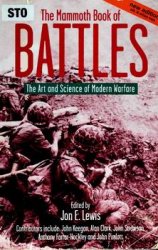What was once the heart of the Aztec Empire is now the heart of Mexico—Mexico City. The capital of Mexico was built from the ruins of Tenochtitlan, Tlatelolco, and the Spanish colonial settlement. It is now the largest city in the Western Hemisphere. The country’s Aztec past resurfaces constantly, through archaeological discoveries, art, and its living language and people.
Mexico has adopted Aztec myths and symbols in its national flag and currency. The flag features the country’s national emblem, which shows an eagle eating a serpent while sitting on a nopal cactus.
This symbol is based on the legend of the founding of Tenochtitlan. Each of Mexico’s coins also shows a part of the designs found on the Aztec calendar stone. An illustration of the Aztec ruler of Texcoco, Netzahualcoyotl, is also on the Mexican 100 peso bill.
After the fall of the Aztec Empire, the Spanish began colonizing what is now central Mexico. Christianity was a driving force used by the Spanish to rule the Aztecs. The Spanish razed Aztec temples and religious centers, building cathedrals and missions in their place. Templo Mayor was dismantled, and the Metropolitan Cathedral of the Assumption of Mary of Mexico City was built in its place. The Aztec system of rituals was destroyed, breaking apart the social structure of Aztec society. Spanish became the main language spoken throughout New Spain. Cities adopted Spain’s political systems, and the tribute system was used to support Spain. The Spanish ruled Mexico for the next 300 years, until Mexico gained its independence in 1810.
While the Spanish destroyed many Aztec pyramids, artworks, and sculptures, some structures were well preserved. The most well-known ruin is Templo Mayor, the ceremonial center of Tenochtitlan. Much of it was buried when the Spanish built their city atop the Aztec city. After its discovery in 1978, the site was heavily excavated over the next five years. Workers found seven layers showing the great temple’s construction phases.
More than 100 sacrificial deposits were found, containing more than 6,000 Aztec objects.1
New Aztec objects and ceremonial sites are constantly being unearthed by archaeologists as the city builds roads or begins other construction projects. Today, visitors can see many Aztec artifacts and learn about the culture in Mexico’s museums, including the Templo Mayor Museum and Mexico’s National Museum of Anthropology. Many museums around the world also contain collections of Aztec art and sculpture, and touring exhibitions teach viewers about the Aztecs.
Amazing
A crew of electrical workers was doing some routine maintenance in a Mexico City street in 1978 when they made a monumental discovery. They found a giant round stone showing the goddess-warrior Coyolxauhqui. The crew knew they were in the archaeological zone and contacted the Mexican authorities. It turned out to be one of the most important Aztec archaeological finds to date.
Aztec mythology and symbolism have influenced many Mexican artists. World-famous muralist Diego Rivera referenced the Aztecs in many murals and sculptures. His murals at Mexico City’s National Palace depict the history of Mexico. One mural, called The Great City of Tenochtitlan, shows the Aztec city’s market, temple, and people.
Another beautiful example of Rivera’s Aztec-influenced artwork is seen in his Fountain of Tlaloc, the Aztec rain god. This giant mosaic-tiled sculpture was built between 1950 and 1952 at a pumping station for the Mexican municipal water system in Chapultepec Park. It shows Tlaloc lying on his back in a shallow pool with his arms and legs splayed around him. Rivera also painted colorful and intricate murals along the floor of the tank.
Miguel Covarrubias was a Mexican illustrator, researcher, and writer. Much of his illustration, painting, and writing focuses on the peoples of Mesoamerica. Nobel Prize-winning poet Octavio Paz also wrote about the Aztecs. His epic poem Piedra del Sol is about the Aztec sun stone and the Aztecs’ worship of Venus.
The Nahua peoples are the descendants of the Aztecs. They are mostly rural farmers living in Mexico, and they grow many of the foods once cultivated by the Aztecs, such as maize, maguey cactus, and squash. More than 1 million people still speak Nahuatl, the ancient language of the Aztecs.2 Mexican Spanish includes 3,000 words that come from this language, including many plant and instrument names.3 Different Aztec foods have endured as well—enchiladas, tamales, and chocolate are just a few. In markets, healers sell healing herbs and plants used in Aztec times. Chinampas can still be seen in the town of Xochimilco, where many plants and flowers are grown.
One lasting food from the time of the Aztecs is guacamole. They called it ahuaca-mulli, Nahuatl for “avocado sauce.” The Aztecs made this sauce very much as guacamole is made today, mashing avocados with tomatoes, onions, and cilantro.
The Aztecs were the largest civilization in Mesoamerica. They built a vast empire and dominated the Valley of Mexico for centuries, leaving behind many artifacts and structures, as well as a living culture that continues to influence modern ones. New artifacts from this ancient civilization continue to be discovered, revealing new secrets and teaching us the ways of the ancient Aztecs.
Mexican Flag and Currency
Mexico has adopted Aztec myths and symbols in its national flag and currency. The flag features the country’s national emblem, which shows an eagle eating a serpent while sitting on a nopal cactus.
This symbol is based on the legend of the founding of Tenochtitlan. Each of Mexico’s coins also shows a part of the designs found on the Aztec calendar stone. An illustration of the Aztec ruler of Texcoco, Netzahualcoyotl, is also on the Mexican 100 peso bill.
SPANISH RULE
After the fall of the Aztec Empire, the Spanish began colonizing what is now central Mexico. Christianity was a driving force used by the Spanish to rule the Aztecs. The Spanish razed Aztec temples and religious centers, building cathedrals and missions in their place. Templo Mayor was dismantled, and the Metropolitan Cathedral of the Assumption of Mary of Mexico City was built in its place. The Aztec system of rituals was destroyed, breaking apart the social structure of Aztec society. Spanish became the main language spoken throughout New Spain. Cities adopted Spain’s political systems, and the tribute system was used to support Spain. The Spanish ruled Mexico for the next 300 years, until Mexico gained its independence in 1810.
AZTEC RUINS
While the Spanish destroyed many Aztec pyramids, artworks, and sculptures, some structures were well preserved. The most well-known ruin is Templo Mayor, the ceremonial center of Tenochtitlan. Much of it was buried when the Spanish built their city atop the Aztec city. After its discovery in 1978, the site was heavily excavated over the next five years. Workers found seven layers showing the great temple’s construction phases.
More than 100 sacrificial deposits were found, containing more than 6,000 Aztec objects.1
New Aztec objects and ceremonial sites are constantly being unearthed by archaeologists as the city builds roads or begins other construction projects. Today, visitors can see many Aztec artifacts and learn about the culture in Mexico’s museums, including the Templo Mayor Museum and Mexico’s National Museum of Anthropology. Many museums around the world also contain collections of Aztec art and sculpture, and touring exhibitions teach viewers about the Aztecs.
Amazing
Discovery
A crew of electrical workers was doing some routine maintenance in a Mexico City street in 1978 when they made a monumental discovery. They found a giant round stone showing the goddess-warrior Coyolxauhqui. The crew knew they were in the archaeological zone and contacted the Mexican authorities. It turned out to be one of the most important Aztec archaeological finds to date.
MODERN ARTISTS
Aztec mythology and symbolism have influenced many Mexican artists. World-famous muralist Diego Rivera referenced the Aztecs in many murals and sculptures. His murals at Mexico City’s National Palace depict the history of Mexico. One mural, called The Great City of Tenochtitlan, shows the Aztec city’s market, temple, and people.
Another beautiful example of Rivera’s Aztec-influenced artwork is seen in his Fountain of Tlaloc, the Aztec rain god. This giant mosaic-tiled sculpture was built between 1950 and 1952 at a pumping station for the Mexican municipal water system in Chapultepec Park. It shows Tlaloc lying on his back in a shallow pool with his arms and legs splayed around him. Rivera also painted colorful and intricate murals along the floor of the tank.
Miguel Covarrubias was a Mexican illustrator, researcher, and writer. Much of his illustration, painting, and writing focuses on the peoples of Mesoamerica. Nobel Prize-winning poet Octavio Paz also wrote about the Aztecs. His epic poem Piedra del Sol is about the Aztec sun stone and the Aztecs’ worship of Venus.
A LIVING CULTURE
The Nahua peoples are the descendants of the Aztecs. They are mostly rural farmers living in Mexico, and they grow many of the foods once cultivated by the Aztecs, such as maize, maguey cactus, and squash. More than 1 million people still speak Nahuatl, the ancient language of the Aztecs.2 Mexican Spanish includes 3,000 words that come from this language, including many plant and instrument names.3 Different Aztec foods have endured as well—enchiladas, tamales, and chocolate are just a few. In markets, healers sell healing herbs and plants used in Aztec times. Chinampas can still be seen in the town of Xochimilco, where many plants and flowers are grown.
Guacamole
One lasting food from the time of the Aztecs is guacamole. They called it ahuaca-mulli, Nahuatl for “avocado sauce.” The Aztecs made this sauce very much as guacamole is made today, mashing avocados with tomatoes, onions, and cilantro.
The Aztecs were the largest civilization in Mesoamerica. They built a vast empire and dominated the Valley of Mexico for centuries, leaving behind many artifacts and structures, as well as a living culture that continues to influence modern ones. New artifacts from this ancient civilization continue to be discovered, revealing new secrets and teaching us the ways of the ancient Aztecs.




 World History
World History









